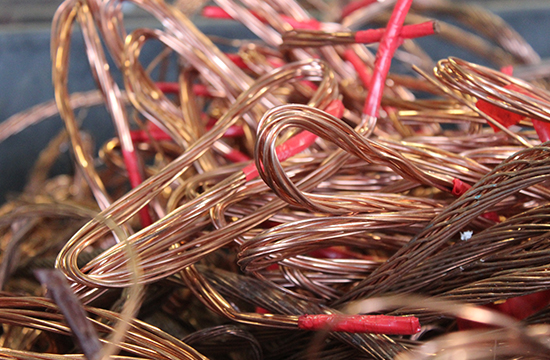Scrapping metal can sometimes feel like a laborious task.
As such, it can be tempting to throw your unused metals into landfill, wiping your hands of it and never thinking about it again.
But did you know you are not only contributing to environmental pollution and waste, while also missing some potentially significant profits?
Metals, especially non-ferrous ones like copper and brass, have high market value, and not scrapping them means not reaping the financial rewards.
With that in mind, we’ve identified the three steps you need to take to sort your scrap metal for recycling and start turning your waste into wealth!
3 Steps to Successfully Sort Scrap Metal for Recycling
Without further ado, let us dive straight into the three important steps that you need to take when sorting scrap metal for recycling (plus a bonus step to ensure you are doing it perfectly!).
Step 1: Separate Ferrous and Non-Ferrous Metals
For starters, you’ll need to separate the ferrous and non-ferrous metals.
But what does that mean? Well, in simple terms, ferrous is a different term used for a metal that is magnetic. So, step one means focusing on separating magnetic (aka ferrous), and non-magnetic (aka non-ferrous) metals.
Do not worry, you do not need an expensive machine to help you differentiate the two. Using a magnet is a quick and effortless way to identify any ferrous metals, which include metals such as iron and steel.
Separating these types of metals is important for several reasons, not least because it simplifies the entire recycling process, reducing the chances of contamination in the waste stream.
But that is not all.
Non-ferrous metals tend to be more valuable, so separating them gives you a much better chance of maximising your profits and ensures no high-value metal is lost in shuffle.
Non-ferrous metals often need to go through specific recycle facilities due to their higher price point, facilities like those on offer at Morecambe Metals.
With that in mind, it is easy to see why this step is so crucial for creating the foundation for all subsequent recycling activities.
Step 2: Categorise Non-Ferrous Metals
Once you have successfully separated your metals into ferrous and non-ferrous, it is time to categorise your non-ferrous metals based on their characteristics.
Here is a quick breakdown of some of the most common non-ferrous metals to help you categorise by value and characteristics:
Copper: A reddish-brown metal that is highly conductive, making it one of the most valuable non-ferrous scrap metals due to the demand from construction and electrical industries.
Brass: A yellowish alloy of zinc and copper, brass can sometimes be mistaken for gold, and is often used for plumbing, musical instruments, and hardware, making it another valuable scrap metal.
Aluminium: Aluminium also is another lightweight, corrosion-resistant non-ferrous metal, and is extremely malleable and recyclable. It is used in many industries such as construction which makes it valuable, although there is more of it in the market than copper or brass, making it less valuable than those two scrap metals.
Lead: While lead has much poorer conductivity than the other scrap metals listed above, it does have some value, as it is a key component of car batteries, radiation shielding, and other important products and industries.
Due to its wide usage in car batteries, you can still fetch a decent price for lead, but only if it is clearly separated from your other non-ferrous metals.
Zinc: Bluish white in colour, zinc’s most common use is to galvanise and protect other metals from rust, as it is a fantastic option for corrosion prevention.
Some other common metals you will come across include nickel, tin, and titanium. Keeping each of these metals separate from one another is crucial to ensure they maintain their value, as merging the cheaper metals (nickel, tin, titanium), could significantly reduce the value of your more profitable metals (copper, brass, etc).
Step 3: Remove Non-Metal Attachments
Once you have successfully separated up your ferrous and non-ferrous metals, and then split your ferrous metals into specific categories, the next steps to remove any non-metal components.
That might be something plastic, some rubber elements, or even wood. One common mistake is either assuming non-metal attachments will not be an issue, or that those aspects will be removed for you.
They might be removed for you, but you can bet that the quality of your recyclables will drop and the price you will be offered will be much lower than it could be.
The more efficient you can make your recycling process, the more likely you are to maximise the value of your metals and make the entire process more enjoyable as well!
Bonus Step: Responsibly Recycle with Morecambe Metals
As you can see, there are many benefits to sorting your scrap metal. While prices do fluctuate and are dependent on where you go, you can get some significant value from recycling your scrap metal, not mention the environmental benefits you will achieve along the way.
To ensure you are maximising the value of your scrap metal, and for peace of mind that it will recycle responsibly for you, why not head down to Morecambe Metals?
Our services include the provision of containers, skips and bins and collection for all non-ferrous scrap metal.
Give us a call on 01524 69191 and a member of our expert team will be more than happy to help.




